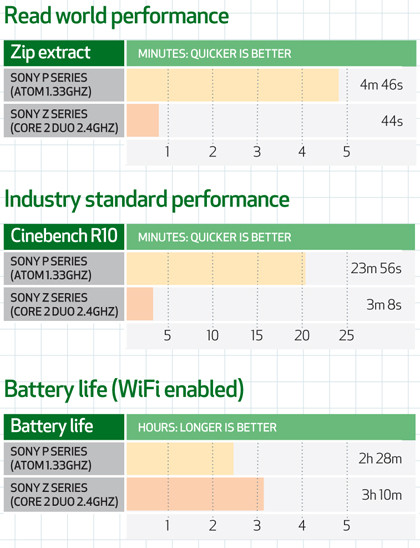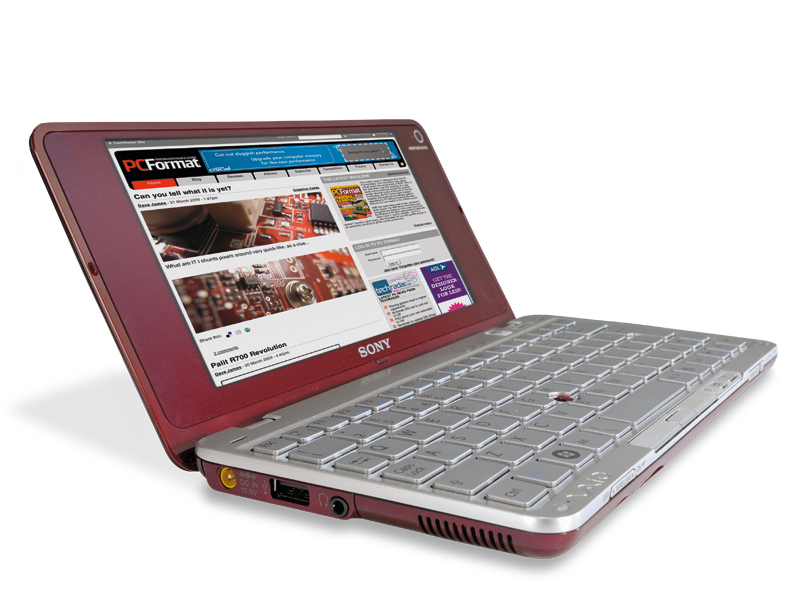TechRadar Verdict
Confirmation, not that it was needed, that Vista plus Atom equals end user misery
Pros
- +
Very compact
Cons
- -
Ridiculously overpriced
- -
Feeble performance
- -
Mediocre battery life
Why you can trust TechRadar
At the unveiling of new Sony products like the Vaio P11Z/R, there's a standard operating procedure observed by most tech junkies .
First, gaze longing at the glossy images. Then peruse the spec. Finally, moan softly as the irresistible want washes over you. Few companies do sheer physical desirability quite like Sony.
Just occasionally, however, Sony kit only delivers partially on the initial press-release promise.
But that isn't the case with the new P Series netbook. Oh no, it doesn't deliver partially; it fails to deliver at all. Not to put too fine a point on it, this eight-inch, Atom-based netbook is junk.
Much of the explanation involves Sony's decision to trim the P out with Windows Vista. Installed on a conventional laptop or desktop PC - one powered by a grunty multi-core processor and a decent hard drive - Vista's appetite for resources can be beaten into submission.
But this P Series has only a 1.33GHz Atom processor with which to pugilise the OS. And it doesn't come close to being good enough.
Words truly cannot describe how painful it is to do anything on this netbook, such is its slovenly rate of response. Basic web browsing is a miserable experience. Pages are slow to load and all but the most low res, low bit-rate web video is jerky.
Just dragging and dropping a file from a USB storage device to the desktop is enough to give it a near-fatal coronary.

That, of course, assumes you manage to overcome the schizophrenic responses of the pointing nipple and successfully execute a drag-and-drop. Oh, and did we mention that the mere act of moving the pointing cursor causes CPU time to jump to over 50 per cent?
But the crowning turd on the dunghill of shortcomings has to be the time taken for the P Series to become fully responsive following a cold boot. The Desktop appears in a little over a minute, which is reasonable. But it takes as much as 15 minutes for Vista's disk grinding to calm down and allow the P to do meaningful work.
What's more, even the screen is not up to Sony's typically high standards. Yes, the pixel pitch is razor sharp thanks to the generous 1,600 x 768 resolution and diminutive eight-inch diagonal. But the screen needn't have been so titchy.
There's a ton of blank bezel on either side and below. It also suffers from a little backlight bleed along the top and bottom edges.
All of which means the compact chassis, slick styling, 3G networking – you name it - are for nought. At £300 the P Series would be infuriating. For £850, it's insulting.
Buy from our affiliates: Argos | BT Shop | PurelyGadgets
Technology and cars. Increasingly the twain shall meet. Which is handy, because Jeremy (Twitter) is addicted to both. Long-time tech journalist, former editor of iCar magazine and incumbent car guru for T3 magazine, Jeremy reckons in-car technology is about to go thermonuclear. No, not exploding cars. That would be silly. And dangerous. But rather an explosive period of unprecedented innovation. Enjoy the ride.
